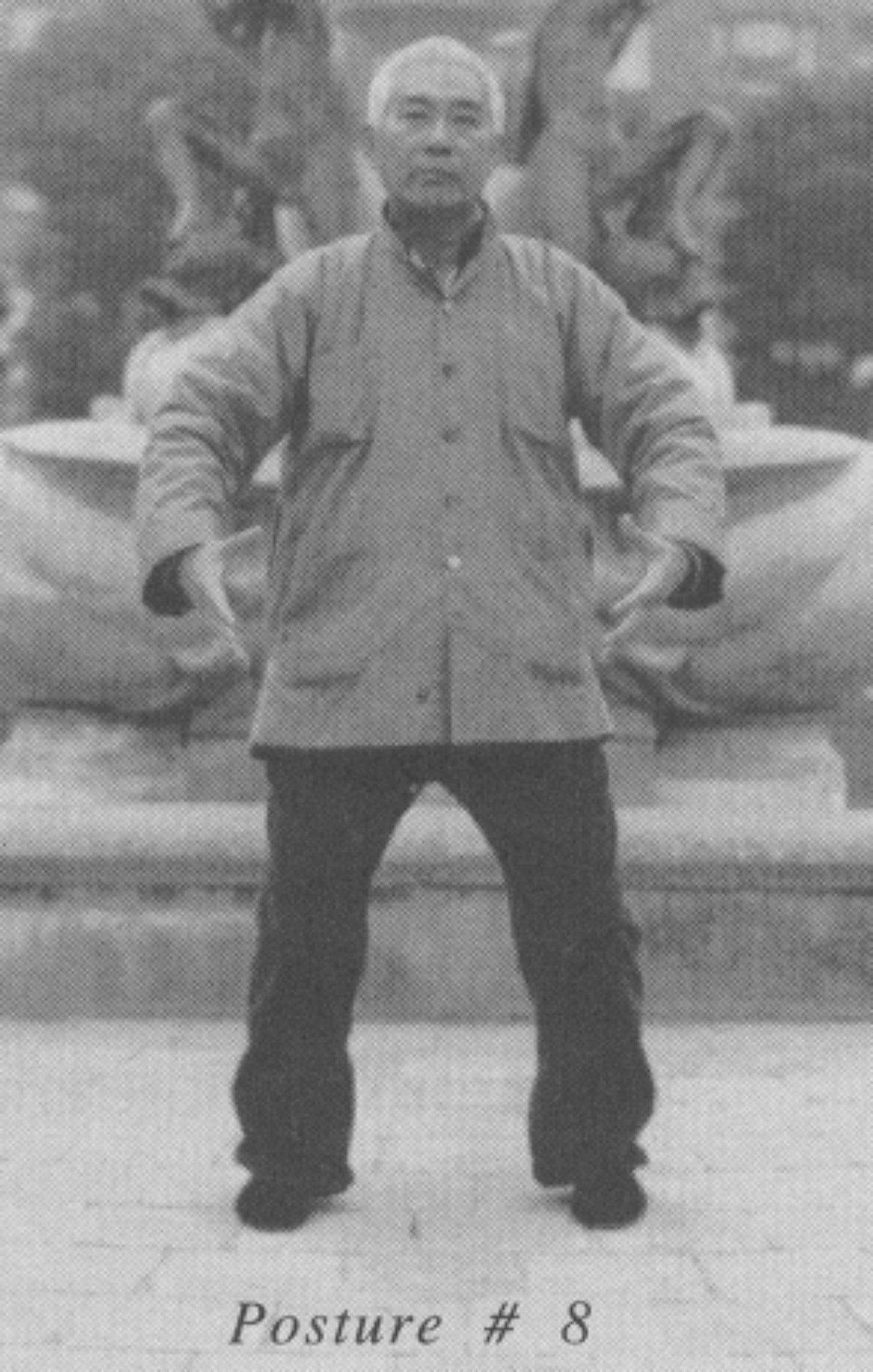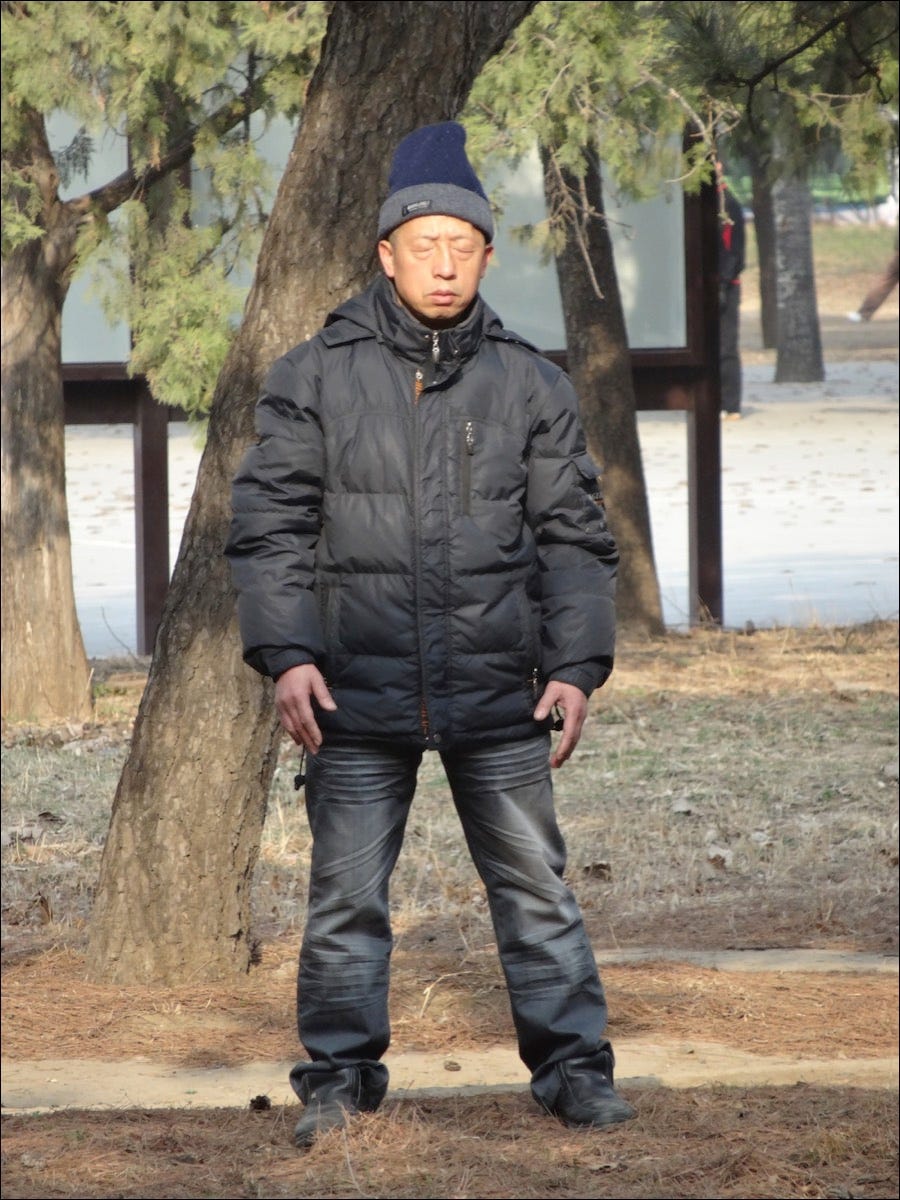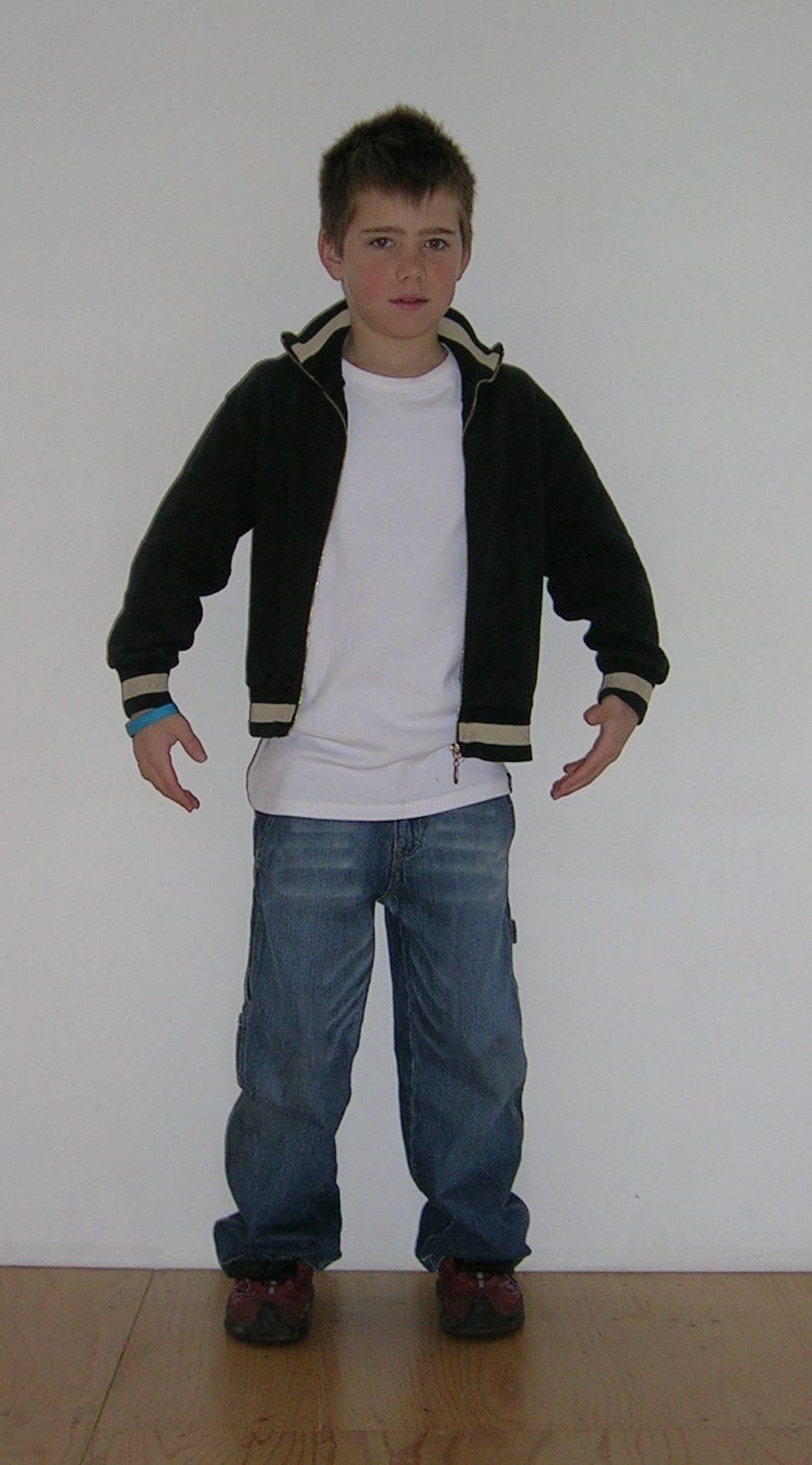Within Chinese traditional internal martial arts, there is a remarkable training method: remaining in certain body positions for long periods of time. Not infrequently, such practices are viewed with a certain disdain. They are said to be static, detached from martial dynamics and actually naive. How could martial skill ever be trained by standing still? Yet the correct practice of zhan zhuang - the collection of standing poses - shows that reaction speed, sensitivity, movement coordination and resistance to stress can be honed through it.
One martial tradition in particular, I Chuan, is fully committed to the use of silent postures. The entire basis of I Chuan is laid by zhan zhuang practice. Zhan zhuang is translated in the literal sense as 'standing like a stick', but more vividly as 'standing like a tree'. An essential posture is wu chi zhuang.
‘Wu chi’ refers to unformed action. Before a defined action is selected to be performed, there are innumerable other actions possible. Before ‘stepping forward’ is selected and ultimately manifested, together with ‘stepping backward’, ‘stepping sideways’, jumping up’ or ‘turning’ and many more movement options it lays dormant and all have equal potential value. There exists a vacuum, a stage of stillness, where all these options have wakened up, but none of these have yet manifested.
The practice of the wu chi posture doesn’t include any particular movement, at the same time it includes the potential of all movements. Instead of focussing on merely ‘stepping forward’, one intends ‘stepping forward’ and ‘stepping backward’ at the same time. Plus ‘stepping left’ and ‘stepping right’, ‘sitting down’ and ‘standing up’, ‘turning left’ and tuning right. The wu chi practice lay in the area of pre-movement.
While standing still in the wu chi posture the intention (i) is preparing the body for action. All the qualities of movement are highlighted: the direction, the duration, the length, the strength, the intensity etc. without all that leads to an actual movement. The practitioner wants to move, has cultivated the strong intention to do so, but doesn’t show any of it.
Instead of a dull stand-off, a boring standstill, the wu chi posture includes a high internal dynamic. It shimmers with possibilities.
The wu chi posture resembles the stance of a marvelled child. Or the stance of an adult, intensely listening. Centred, grounded, balanced, the senses primed, optimally relaxed. The decision to move has not yet been made, and is repeatedly postponed. Yet the body is ready to spring into action at any time.
On the athletics track sounds ON YOUR MARKS: the body relaxes and connects with the ground. Than GET SET: the mind sharpens and alertness grows. With GO the athlete explodes into action and the accumulated energy is being consumed.
However, the wu chi training takes a different track. ON YOUR MARKS and GET SET remain the same, but on GO, the practitioner doesn’t sprint forward at all.
At the normally inevitable GO the practitioner returns to the deep relaxation phase of ON YOUR MARKS. And use that as a bedding for an increased mental sharpness at another GET SET. The GO phase is omitted - what follows is an ongoing alternation between ON OUR MARKS and GET SET, in ever-increasing intensity and refinement. The GO moment is closely approached and a lot of potential energy, chi, is built up. None of it is lost in the movement. The area of research of the wu chi zhuang is the seemingly empty space before the movement, the movement that, as long the wu chi posture is practiced, will never manifest.
Physically, the wu chi posture is left-right symmetrical. The intention to move is also equally divided between the left and right sides. At a GO command, the practitioner could move equally fast and equally powerful to either the left or the right. However, the GO command will not sound, and movement will not appear, but the circulation of chi will, in abundant measure.
Equally, the physical posture and distribution of intention is also perfectly divided between the front and the back of the body. When a GO command would sound, the practitioner could move forward or backward quickly and adequately. But there won’t be any GO command, and no physical movement to either the back or the front, but chi circulation to these regions is greatly enhanced.
And the same goes for the space above and the space below.
Imagine: you are standing still in the middle of traffic on a very busy square. All around are pedestrians, cyclists, cars, a bus and a tram. When the body is tense and/or the mind distracted, you will never be able to give the right response to potential collision. A cyclist comes from the right, a car from behind, the tram from the front. Your attention and intention to step away quickly must divide between six primary directions. The wu chi posture will give a clue.
If you don't like the image of a busy traffic square: get up early in spring or early summer and go into the forest. Stand with your eyes closed, upright, feet firmly on the ground, relaxed, ears pricked. The wonder of bird sounds will naturally connect you to the space around you. Bird sounds in front, behind, left and right, above, and perhaps near you on the ground. Your breath is elongated and still. There won’t be any physical move in any of these directions. From your body centre in your lower abdomen, the xia dan tian, sensual awareness, intention and chi will spread in six directions.
Remember the hide-and-seek of your childhood. After counting back, you stood there alone, wondering where your friends were. You looked forward, but equally well backwards. You looked left and right, up and down, tried to do all that at the same time. And with that you kept an eye on the whole environment, you were able to take action in every possible direction if necessary.
In the I Chuan tradition, we train in the wu chi stance for five or ten minutes. Five or ten minutes to refine sensory perception and train alertness, increase reaction speed, become more grounded, and build chi. But there are also days when we stand in that same wu chi posture for 45 minutes. 45 minutes devoted to high energy training.
Another name for the wu chi stance is ti cha zhuang. Ti translated as 'carrying' or 'lifting', cha as 'stabbing'. In silence, when practicing the ti cha zhuang you make these two opposing movements simultaneously: an upward directed lifting, and a downward directed stabbing. Both movements are limited to a bare minimum; in fact, they balance each other in such way that the result seems a silent pose. The intention is clear: no physical movement but a strong stimulus for chi circulation.








Interessant te lezen! 🙏